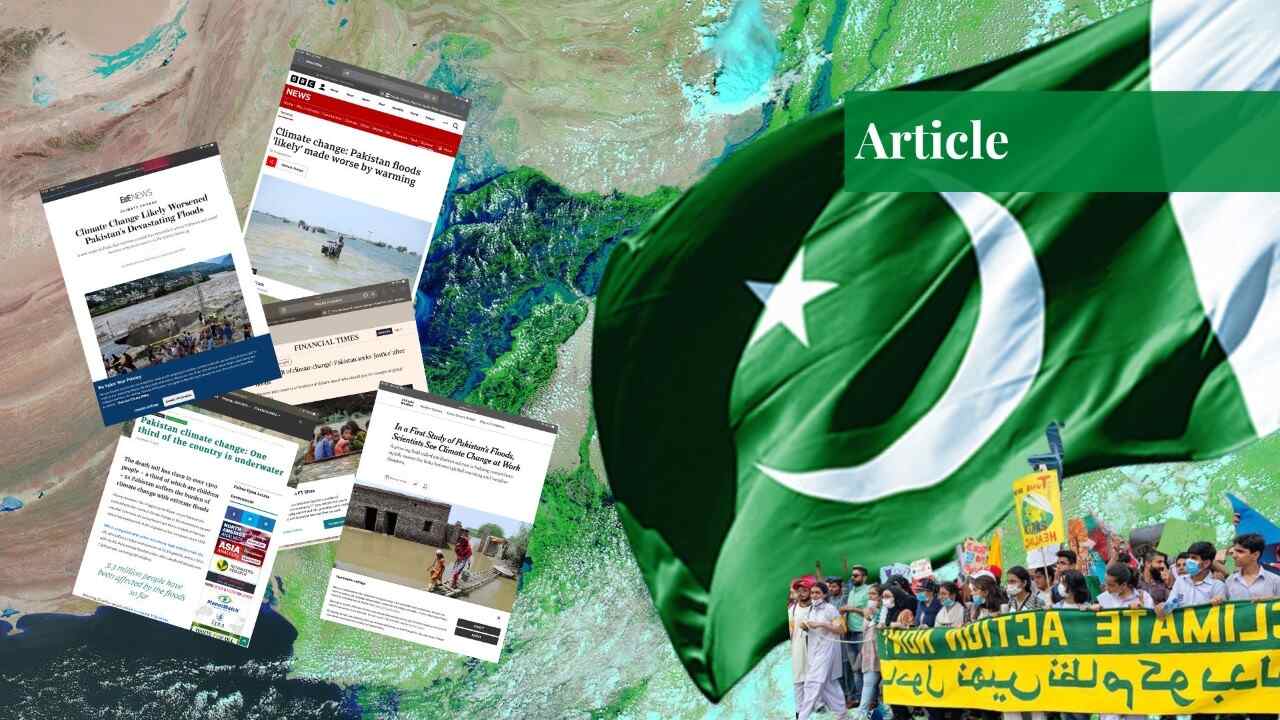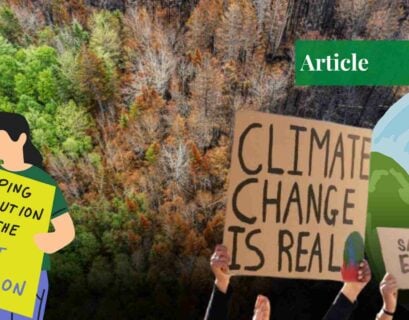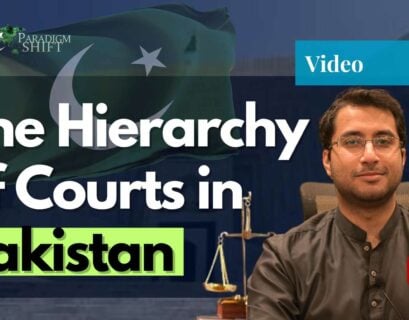Ms Seemal Nadeem is studying public policy at NUST.
Introduction
In light of climate change, we see global governments committing to ‘sustainable’, ‘mitigation’, and ‘adaptation’ policies. These words are often used in climate policy options or alternatives, but there is little detail on what ‘sustainability’ means and how we can achieve it. These terms are used too often in tandem in a chain of equivalence to the extent that they have been reduced to mere words and are not translated to policy action.
The Cold War was the highlight of the second half of the 20th century, so up until the 1980s, the world was not introduced to the concept of ‘sustainability’ because there was an immense focus on the ideological commitment to neoliberalism. The term ‘sustainability’ was coined only around 30 years ago in 1987 in the Brundtland Report published by the United Nations (UN). In the report, sustainable development was defined as meeting “the needs of the present without compromising the ability of future generations to meet their own needs”.
The word later started appearing in environmental reports published by the UN and more international initiatives to combat global warming, stirring a shift in development policy with a new international agenda underway. A concept that was recently introduced now required a shift in the development trajectory and its theoretical underpinnings for developing nations.
Statistics on global carbon emissions show that the US, China, and India alone contribute to 50% of the world’s carbon emissions. Developing nations make up more than 85% of the total global population yet 50% of the global carbon emissions are released by only 3 countries. Since the developed countries are more heavily responsible for the deterioration of the climate, mitigation efforts by the developing countries alone cannot reduce or reverse climate change in isolation.
Incorporating in UN and National Documents
The terms gained immense traction in 2016 when the Millennium Development Goals (MDGs) were renamed Sustainable Development Goals (SDGs). New targets were set with indicators to measure the progress of countries, like the 17 SDGs, each one with its own targets and indicators.
Statistical models were heavily employed to rank countries and international organizations came up with numerous environmental indices: Climate change Performance Index, Global Climate Risk Index, Environmental Performance Index, and Environmental Health Index, among others. The element of sustainability was reduced to measurements.
The UN influenced the policy process of developing nations to incorporate sustainability and mitigation efforts in their policies. The sustainable development and environmental indices, targets, and indicators are also used to legitimize foreign aid and it represents donor preferences. Pakistan is often ranked very poorly on most of these indices; it falls in the higher tier of countries that are environmentally vulnerable and perpetrators of carbon emissions while simultaneously listed in the lower tier of countries in terms of sustainable development progress, and implementation of adaptation and mitigation policies.
The UN has proposed Pakistan adopt ‘adaptation’ policies which are followed up by reconstruction efforts. This has allowed the UN to intervene in Pakistan’s development policies to make them more ‘sustainable’ and give foreign aid to achieve its environmental objectives. For example, UNDP has issued the Adaptation Fund to Pakistan to ‘finance projects and programs that help vulnerable communities in developing countries adapt to the effects of climate change’.
Hollow Terms
‘Sustainability’ is overused by international agencies in development theory and has thus become a buzzword. The 68-page SDG Report 2022 mentions ‘sustainable’ 109 times but adds little meaning to the word; the word ‘sustainable’ is used as a measurement but it is not specified, for example, the report uses sentences like “If well-planned and managed, urban development can be sustainable and can generate inclusive prosperity” (p. 48), “the adoption of solutions for a sustainable blue economy” (p. 56), and “which adversely impacts the sustainable development of national economies” (p. 61).
These examples of phrases taken from the report show that the word ‘sustainability’ is used mostly as a filler word without much deliberation on what it actually means or what level of improvement it specifies and what actions need to be taken to achieve the said sustainable levels. ‘Sustainability’ is often followed up by ‘mitigation’ and ‘adaptation’ in development policies, also as buzzwords.
The terms ‘mitigation’ and ‘adaptation’ fall in a chain of equivalence whenever ‘sustainability’ is mentioned. These buzzwords have plagued the national climate change policy of Pakistan. In the 2012 and 2021 versions of the national climate change policy, we see a consistent pattern where for every climate change problem, the word ‘sustainable’ precedes the policy option or solution.
The words ‘sustainable’, ‘mitigation’, and ‘adaptation’ appear 168 times collectively in the 2021 version alone, but, more importantly, they follow up vague policy options. For example, the National Climate Change Policy 2021 uses vague phrases for policy options like “encourage public and private sector investment in adaptation and mitigation measures” (p. 2), “sustainable land management practices” (p. 8), “sustainable use of natural forests” (p. 11), “ensure proper management and mitigation of invasive species” (p. 16), and “undertake appropriate mitigation actions to reduce GHG emissions” (p. 36). There is no explanation or procedures to outline how exactly will these options be carried out.
Funds Serve No Purpose
The overuse of the words ‘sustainability’, ‘mitigation’, and ‘adaptation’ have politicized their meanings and they are only left with a moral grounding to legitimize interventions in Pakistan while little impactful actions are taken. There is also little to no evidence of the success of the adaptation funds; if these interventions had any real impact, one-third of Pakistan would not be flooded in the present day.
These funds are instead used for measures that do not bring any change to the environment, like PTI’s afforestation initiative. During the PTI government, with the collaboration of the United Nations Environment Program (UNEP), the PTI government launched the Ten Billion Tree Tsunami Program (TBTTP) across Pakistan to slow down the impact of climate change by absorbing CO2 emissions as a mitigation and adaptation policy. However, this afforestation policy was a waste of resources, and it was unsustainable.
Syed Mahmood Nasir, the former Inspector General of Forests told DW that saplings were planted without much empirical research in areas that were already scarce in groundwater which burdened the land. With Pakistan facing a water shortage in many areas, such an unplanned approach poses a huge threat to Pakistan’s natural capital. Moreover, planting trees outside of their natural biome is expensive and there is less chance of them surviving.
Pakistan is one of the most populous countries and critics point out that the afforestation was carried out on land that could be utilized for pastures or agriculture; this was a dangerous trade-off. The UNEP fully endorsed this afforestation initiative without considering the realities. The only thing that mattered was that the aid was utilized for an environmental initiative, that was blindly labeled as a sustainable practice.
Conclusion
‘Sustainable development’ was introduced by the UN, and it rose very high up in the international agenda because new definitions were constructed, statistical models were developed to measure it, and developing nations were promised aid if they incorporated ‘mitigation’ and ‘adaptation’ policies. However, these terms have been reduced to mere numbers and they are thrown around to either further the political interests of some groups or justify international interventions in developing countries.
These words have lost meaning, and they are suggested as vague policy options without much deliberation on what specifies ‘sustainability’ or what are ‘mitigation’ and ‘adaptation’ measures. Moreover, there is little acknowledgment of the fact that ‘unsustainable’ development practices were imposed on developing nations by developed countries in the first place. The developed countries fund sustainable development in developing countries while continuing unsustainable industrial development themselves; such is the hypocrisy of ‘sustainability’.
If you want to submit your articles and/or research papers, please check the Submissions page.
The views and opinions expressed in this article/paper are the author’s own and do not necessarily reflect the editorial position of Paradigm Shift.



















